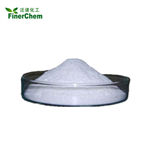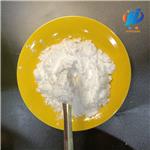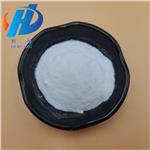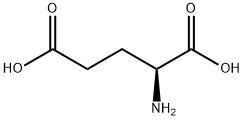- L-Glutamic acid
-

- $2.00 / 1000kg
-
2024-04-19
- CAS:56-86-0
- Min. Order: 1kg
- Purity: 99%
- Supply Ability: 200mt
- L-Glutamic acid
-

- $50.00 / 1kg
-
2024-04-18
- CAS:56-86-0
- Min. Order: 1kg
- Purity: 99.10%
- Supply Ability: 50000kg
- L-Glutamic acid
-

- $6.00 / 25kg
-
2024-04-18
- CAS:56-86-0
- Min. Order: 1kg
- Purity: 99.92%
- Supply Ability: 50000tons
Related articles - Benefits of Glutamic acid
- L-glutamic acid, also known as glutamic acid, is one of the many components of proteins. Like its fellow amino acid glutamate,....
- Nov 15,2019
|
| Product Name: | L-Glutamic acid | | Synonyms: | (S)-2-Aminopentanedioic acid, Acidum glutamicum, Glu;(S)-2-Aminopentanedioic acid, Glu;L-Glutamic acid,(S)-2-Aminopentanedioic acid, Acidum glutamicum, Glu;L-Glutamic acid,(S)-2-Aminopentanedioic acid, Glu;L-Glutamic acid, extra pure, Ph Eur, FCC;Glutamic Acid (200 mg);L-Glutanmic;L(+)-GlutaMic acid, 99% 100GR | | CAS: | 56-86-0 | | MF: | C5H9NO4 | | MW: | 147.13 | | EINECS: | 200-293-7 | | Product Categories: | Glutamate;fine chemicals;glutamic acid;amino acid;bio-chemical;chemicals;food additive;food additives;nutritional supplement;organic acids;pharmaceutical intermediate;Amino Acids & Derivatives;Intermediates & Fine Chemicals;Pharmaceuticals;Nutritional Supplements;Amino Acids;Chiral Compound;Glutamate receptor;amino;alpha-Amino Acids;Amino Acids;Biochemistry;for Resolution of Bases;Optical Resolution;Synthetic Organic Chemistry;Amino acids series;chiral;Glutamic acid [Glu, E];Amino Acids and Derivatives;Food & Feed ADDITIVES;56-86-0 | | Mol File: | 56-86-0.mol |  |
| | L-Glutamic acid Chemical Properties |
| Melting point | 205 °C (dec.) (lit.) | | Boiling point | 267.21°C (rough estimate) | | alpha | 32 º (c=10,2N HCl) | | density | 1.54 g/cm3 at 20 °C | | refractive index | 1.4300 (estimate) | | FEMA | 3285 | L-GLUTAMIC ACID | | storage temp. | 2-8°C | | solubility | 1 M HCl: 100 mg/mL | | form | powder | | pka | 2.13(at 25℃) | | color | White | | PH | 3.0-3.5 (8.6g/l, H2O, 25℃) | | Odor | at 100.00 %. mild yeast baked bread | | Odor Type | yeasty | | optical activity | [α]20/D +32°, c = 10 in 2 M HCl | | Water Solubility | 7.5 g/L (20 ºC) | | λmax | λ: 260 nm Amax: 0.1
λ: 280 nm Amax: 0.1 | | JECFA Number | 1420 | | Merck | 14,4469 | | BRN | 1723801 | | InChIKey | WHUUTDBJXJRKMK-VKHMYHEASA-N | | LogP | -3.69 | | CAS DataBase Reference | 56-86-0(CAS DataBase Reference) | | NIST Chemistry Reference | L-Glutamic acid(56-86-0) | | EPA Substance Registry System | L-Glutamic acid (56-86-0) |
| | L-Glutamic acid Usage And Synthesis |
| One of the 20 kinds of common amino acid | Glutamate is one of the 20 common α-amino acids constituting the protein. It acts as the precursor of biosynthesis of glutamine, proline and arginine. It is divided into three forms including L-handed, right-handed and racemic body. The left handed is L-glutamate which is the coding amino acid participating in protein synthesis and is a kind of non-essential mammalian amino acids, and can be converted from glucose inside the body. At room temperature, it is a white or colorless flaky crystal, slightly acidic, and is non-toxic. It is slightly soluble in cold water but easily soluble in hot water and almost insoluble in ether, acetone and acetic acid as well as in ethanol and methanol. It undergoes sublimation at 200 ℃ and decomposed at 247 ℃-249 ℃ with a density of 1.538g/cm3 and optical rotation being + 37-+ 38.9 (25 ℃). L-glutamate has wide applications. It is a kind of drug can be used for treating hepatic coma. It can also be used to produce MSG (monosodium glutamate), research food additives, spices and also used for biochemistry studies. The production of glutamate is based on the microbial fermentation using carbohydrate as the raw material and applying "Isoelectric point extraction" plus "ion exchange resin" for separate it.
Glutamate is ubiquitous in nature. Glutamate salt is distributed in a variety of food as well as in human body. It is both a kind of amino acid constituting protein or peptide and free amino acids. Its L-amino acids form has delicious taste.
Glutamate was first discovered by Rizzo Johnson in 1856. It is a colorless crystal with good flavor and is slightly soluble in water and soluble in hydrochloric acid solution. It has an isoelectric point of 3.22. It is presented a large number of proteins in the grain. Its content in animal brain is also high. Glutamate plays an important role in the protein metabolism in vivo and participates in many important biochemical reactions of animals, plants as well as microorganisms.
| | Application history | Glutamate is named due to that it is originally produced from grain. It is widely distributed in almost the composition of all kinds of protein. Proteolysis can generate obtain glutamate. It is colorless plate-like crystals with an isoelectric point of 3.3. It is soluble in water but insoluble in benzene, ether and some other organic solvents. Its aqueous solution is acidic and thus it belongs to acidic amino acid. In physiology, glutamate, together with glycine, cysteine, can form glutathione which has important physiological functions. Glutamic acid has umami with MSG being its sodium salt. MSG will be broken down under high heat so should be avoid subjecting to strong heating. Japanese chemist Ikeda first discovered MSG. By chance, he felt a delicious taste when drinking seaweed soup. After careful study, he extracted 2 g sodium glutamate from 100 kg of kelp extract. Later, the Japanese produce MSG in large-scale, referred to as "Ajinomoto."In the 1930s, China began to produce MSG started in Shanghai “TianChu” MSG factory. It is further sold to other countries and became famous. MSG is commonly produced as below: first hydrolyze native gliadin or casein, then adjust the solution pH to 3.3 to obtain the glutamate precipitate; after separation, add an appropriate amount of sodium hydroxide to become MSG. MSG can also be artificially synthesized, but the cost is expensive and usually is still through the above protein hydrolysis approach. After the 1960s, the Japanese began apply microbial fermentation for production of glutamate. They placed curtobacterium, Micrococcus, and Bacillus spp into saccharide (mainly starch, glucose), plus urea, ammonium sulfate, ammonium chloride and proper amount of biotin and other nutrients; under these conditions, these bacteria began secrete large quantities of glutamate for the manufacturing of MSG. At present, China has also applied microbial fermentation for producing MSG. Glutamate can also combine with the ammonia in the blood to become non-toxic. It can also be used for the treatment of hepatic coma and recovering from liver dysfunction and other diseases.
The above information is edited by the chemicalbook of Dai Xiongfeng.
| | The significance of amino acid metabolism | 1. Glutamate participates in the joint de-amination reaction with glutamate dehydrogenase being the center (glutamate get deaminated).
2. Ammonia transport; glutamine synthetase catalyze the combination between glutamate and ammonia to generate glutamine. Glutamine is neutral and non-toxic, and easy to penetrate through the cell membrane and is the main form of ammonia transportation.
3. In the glucose-alanine cycle pathway, the muscle glutamate dehydrogenase catalyzed the reaction between α-ketoglutarate and ammonia to generate glutamate; glutamate, together with pyruvate, again forms α-ketoglutarate and alanine in the catalytic action of alanine aminotransferase.
4. In the metabolic pathway of active biological substance, the glutamate itself is a kind of excitatory neurotransmitter and is widespread in the brain and spinal cord. The γ-aminobutyric acid formed by decarboxylation of glutamate is an inhibitory neurotransmitter and is widespread inside the biological body.
5. In the amino acid biosynthetic pathway, glutamate is an important precursor for synthesis of glutamine, proline, and arginine as well as lysine.
6. In the ornithine cycle (urea synthesis) pathway, the mitochondrial glutamate dehydrogenase release the amino-group of glutamate to provide free ammonia for the synthesis of carbamoyl phosphate; the cytoplasmic aspartate aminotransferase transfer the amino group of glutamate to oxaloacetate; the later one can further form aspartate and enters into ornithine cycle with glutamate indirectly supplying the second amino group for the cycle.
| | Pharmacological effects | Glutamate can form harmless glutamine by combing with the blood amine, and also reducing the symptoms of hepatic coma. In addition, it can participate in the brain protein metabolism and carbohydrate metabolism and have certain effects on promoting the oxidation process as well as improving the function of the central nervous system. It can be used for the prevention and treatment of hepatic coma, recovery period of hepatic coma severe liver dysfunction. Glutamate can also be used for the adjuvant therapy for treating recovery of coma and neurological diseases caused by various kinds of reasons (schizophrenia and epilepsy). For oral administration, take 2.5 to 5 g per time and 4 times a day.
| | Identification test | Take 150 mg of sample, add 4 ml of water and l ml of sodium hydroxide test solution (TS-224), dissolve it, add l ml indan ninhydrin test solution (TS-250), and 100mg of sodium acetate; heat at boiling water for 10 mins should generate violet color.
Take 1 g of sample, add 9 mL of water to make suspension, slowly warm on a steam bath and stir until complete dissolution; add 6.8 mL of l mol/L hydrochloric acid solution, and re-suspend; further add 6.8 ml of l mol/L sodium hydroxide solution, after stirring, glutamate should be completely dissolved.
| | Content Analysis | Method 1: accurately weigh sample of about 0.2 g, dissolve it in 3 mL of formic acid; add 50 ml of glacial acetic acid and 2 drops of crystal violet test solution (TS-74), further use 0.1mol/L perchloric acid solution to titrate to until green or blue all disappear. Apply the same method for a blank test at the same time. Each mL of 0.1 mol/L perchloric acid solution corresponds to 14.71 mg of L-glutamic acid (C5H9NO4).
Method 2: accurately weigh 500 mg of sample for being dissolved in 250 mL of water; add several drops of bromothymol blue test solution (TS-56); use 0.1mol/L sodium hydroxide droplets for titrate to the end point of blue. Every mL of 0.l mol/L NaOH liquid is equivalent of 14.7 mg per mL of L-glutamate (C5H9N04).
| | Toxicity | ADI does not make special provision (FAO/WHO, 2001).
GRAS (FDA, §182.1045, 2000);
| | Limited use | FAO/WHO (1984): for convenient foods and broth soups, 10g/kg.
FEMA (mg/kg): beverages, bakery products, meat, sausage meat, broth, milk and dairy products, sauces, cereals, are 400mg/kg.
FDA, §172.320 (2000): As nutritional supplements, limited to 12.4% (by weight of total protein in the food).
| | Chemical Properties | L-glutamic acid is a white phosphorus flake crystal. It is odorless with a slightly special sour flavor. It is slightly acidic. It is slightly soluble in cold water, easily soluble in water, but almost insoluble in ether, acetone and cold acetic acid and is insoluble in ethanol and methanol.
| | Uses | 1. It can be used for the pharmaceutical, food additives, and nutritional supplements.
2. It can be used for biochemical research. In medicine, it can be used for treating hepatic coma, seizures prevention, and reducing ketonuria and ketosis.
3. It can be used as salt substitute, nutritional supplements, and flavor enhancer (mainly for meat, poultry, soups and so on). It can also be used as the prevention agent for the production of magnesium ammonium phosphate in shrimp, crabs and other aquatic can with the usage amount of 0.3% to 1.6%. According to the provisions of GB 2760-96, it can be used as a spice.
4. L-glutamate is mainly used for the production of monosodium glutamate, spices, and as a salt substitute, nutritional supplements and biochemical reagents. L-glutamate itself can be used as drugs and is involved in protein and carbohydrate metabolism in the brain, promoting the oxidation process. This product can combine with ammonia in the body into non-toxic glutamine, causing decreasing ammonia and reducing the symptoms of hepatic coma. It is mainly used for the treatment of hepatic coma and severe hepatic dysfunction. However, the efficacy is not satisfied; Combination with antiepileptic drugs can treat seizures and psychomotor seizures. Racemic glutamate can be used in the production of drugs as well as being used as biochemical reagents.
5. One of its sodium salts: sodium glutamate is used as seasoning. Commodities include monosodium glutamate and gourmet powder.
6. IT is white or colorless scaly crystals and is slightly acidic. It has a density of 1.538. It subject to sublimation at 200 ℃ and decomposition at 247~249 ℃. It is slightly soluble in cold water, easily soluble in boiling water, but insoluble in alcohol, ether and acetone. It can be used for treating hepatic coma disease.
| | Description | L-Glutamic acid, or L-2-aminopentanedioic acid, is a naturally
occurring amino acid of plant and animal proteins. It has a very
faint odor reminiscent of yeast or freshly baked bread. It has a
mild, somewhat sweet, meat-like taste.
The average glutamic acid content of food proteins is 20 percent.
Expressed as glutamic acid per 100 g of the edible portions,
medium fat beef contains about 2.65 g of glutamic acid; whole
liquid cow milk, 0.82 g; lean pork, 2.16 g; haddock, 2.32 g; peas,
5.58 g; soybeans, 7.01 g; commeal, 1.62 g; and whole grain wheat
flour, 4.16 g. In addition, free glutamic acid is present in many
vegetables, fish, and meats in small amounts (0. 005 to 0.23 g per
100 g) and as high as 2 g per 100 g in some varieties of cheese.
Recent estimates of free amino acids in the milk of various species
indicated that the free glutamic acid in human milk is about 0.22
g per 100 mL.
Glutamic acid and its salts are prepared commercially by hydrolysis
of gluten (wheat, corn, soybean, sugarbeet protein); by fermentation
from glucose-containing raw materials; the racemic acid
may be resolved into the d- and ι-isomer by fractional crystallization;
from 2 -cyclopentenylamine; by microbial conversion of aketoglutaric
acid; or by an alternative method, using Bacillus
megatherium-cereus; from fumaric acid using B. pumilus; from
starch.
Glutamic acid and the hydrochloride as well as the mono-sodium,
-potassium, and -ammonium salts of L-glutamic acid share similar
physical properties: they are nearly odorless, white, free-flowing
crystalline powders, and except for glutamic acid and glutamic
acid hydrochloride, are freely soluble in water. Glutamic acid is
slightly soluble and glutamic acid hydrochloride moderately soluble
in water. The pH of a saturated solution is about 3.2. | | Chemical Properties | L-Glutamic acid has a very faint odor reminiscent of yeast or freshly baked bread and a mild, somewhat sweet, meat- like taste This is a naturally occurring amino acid of plant and animal proteins The average glutamic acid content of food proteins is 20%, expressed as glutamic acid per 100 g of the edible portions For a detailed description, see Burdock (1997). | | Chemical Properties | White cryst. powder | | Occurrence | Reported as occurring in many vegetable proteins, in beef fbrin, in the chrysalis of silkworm, in the hydro- lysate of crystalline insulin Also present in other important peptides, such as glutathione, tyrocidin, folic acid, β-lactoglobulin, secretin and bacitracin, and in growth hormone | | Uses | A non-essential amino acid. Its salt form (glutamate) is an important neurotransmitter that plays a key role in long-term potentiation and is important for learning and memory. It is also a key molecu
le in cellular metabolism. | | Uses | Amino acid/exptl antieplileptic | | Uses | L-glutamic acid or its salt, monosodium glutamate (MSG), is used as an
additive to human food to enhance the taste. Although seaweed had
been used in Asia to enhance food flavor for over 1000 years, it was not until 1908 that the essential component responsible for the flavor
phenomenon was identified as glutamic acid. From 1910 until 1956,
monosodium glutamate was extracted from sea weed, a slow and costly
method. In 1956, Ajinomoto, a Japanese company, succeeded in producing
glutamic acid by means of fermentation. Today, L-glutamic acid
or MSG is generally made by microbial fermentation using genetically
modified bacteria. | | Definition | ChEBI: An optically active form of glutamic acid having L-configuration. | | Preparation | By hydrolysis of gluten (wheat, corn or other vegetable sources); by fermentation from glucose-containing raw materials; the racemic acid may be resolved into the d- and l-isomer by fractional crystallization; from 2-cyclopentenylamine; by microbial conversion of α-ketoglutaric acid; or by an alternative method, using Bacillus megatherium-cereus; from fumaric acid, using B pumilus; from starch. | | Biotechnological Production | For industrial production of L-glutamic acid, molasses (sucrose), starch hydrolysates (glucose) and ammonium sulfate are generally used as carbon and nitrogen sources, respectively. Key factors in controlling the fermentation are the presence of biotin in optimal concentration – to optimize cell growth and the excretion of Lglutamate – and sufficient supply of oxygen to reduce the accumulation of byproducts, such as lactic and succinic acid. In biotin-rich fermentation media the addition of penicillin or cephalosporin C favors the overproduction of L-glutamic acid due to effects on the cell membrane. The supplementation of fatty acids also results in an increased permeability of the cells thus enhancing glutamate excretion.
A strain of Microbacterium ammoniaphilum cultured under biotin-deficient conditions produced 58 % of L-glutamic acid formed from glucose via phosphoenolpyruvate, citrate, and of a-ketoglutarate and the other 42 % via the tricarboxylic acid (TCA) or the glyoxylate cycle.
| | Biological Activity | The predominant excitatory transmitter in the mammalian central nervous system. Acts at ionotropic and metabotropic glutamate receptors. | | Biochem/physiol Actions | L-Glutamic acid along with l-Lysine is used for preparation of bifunctional DTPA-like ligands. L-glutamic acid can stimulate the spontaneous release of [3H] dopamine ( [3H] DA). | | Safety Profile | Human systemic effects
by ingestion and intravenous routes:
headache and nausea or vomiting. When
heated to decomposition it emits toxic
fumes of NOx. | | storage | Room temperature | | Purification Methods | Crystallise L-glutamic acid from H2O acidified to pH 3.2 by adding 4volumes of EtOH, and drying at 110o. Likely impurities are aspartic acid and cysteine. It sublimes at 170-175o/10mm. It melts at 160o with cyclisation to L-pyrrolidone carboxylic acid. [Dunn & Brophy J Biol Chem 99 224 1958, Parikh et al. J Am Chem Soc 80 9571958, Greenstein & Winitz The Chemistry of the Amino Acids J. Wiley, Vol 3 pp 1929-1952 1961, Beilstein 4 III 1530, 4 IV 3028.] |
| | L-Glutamic acid Preparation Products And Raw materials |
|